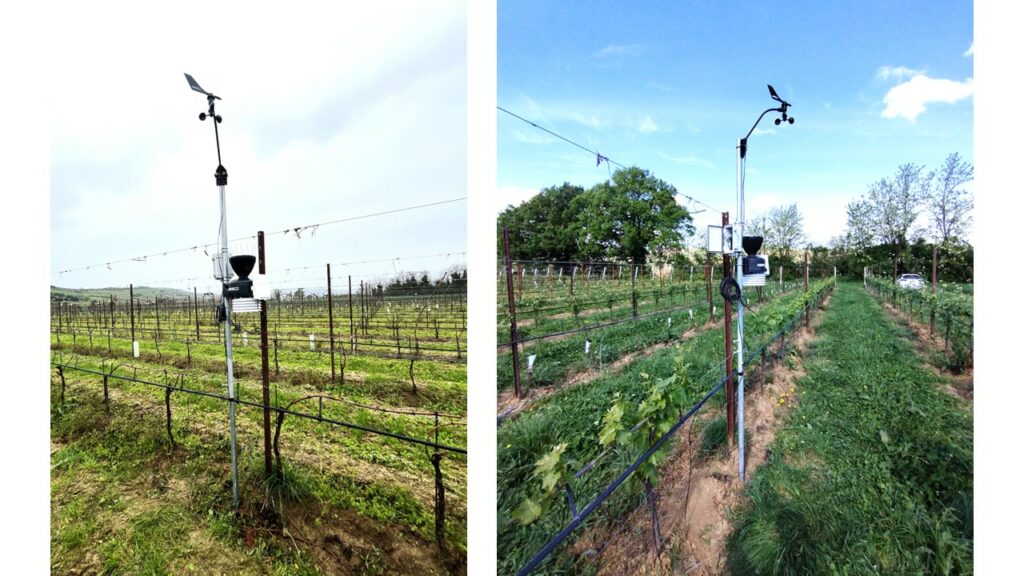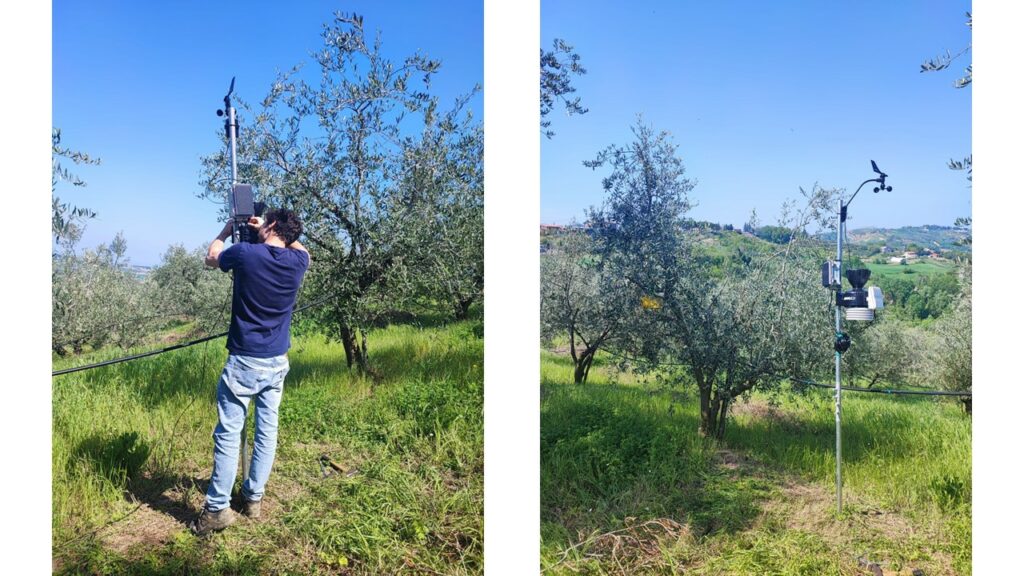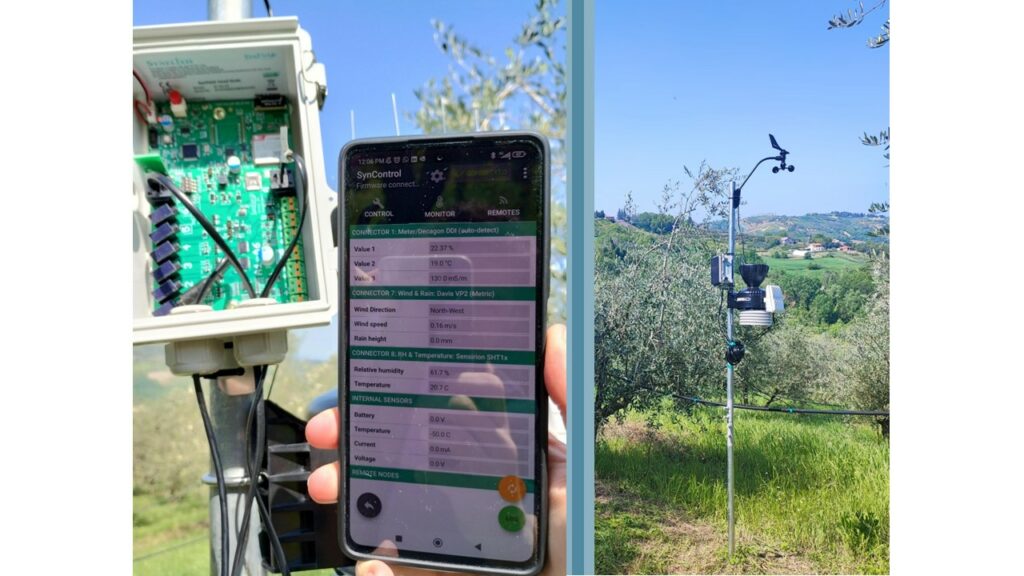Within the context of the AgriDataValue pilot activities, two SynField smart agriculture systems were installed in Italy: one in a vineyard and the other in an olive grove. Each installation comprises of a SynField X3 head node, a meteorological station, and a soil sensor (measuring soil moisture and soil temperature). The meteorological station records ambient temperature, relative humidity, wind intensity, wind direction, and rainfall. SynField can collect real-time environmental data prevailing in the area and provide valuable insights to the producers. The first SynField installation was conducted in a vineyard, located in Tebano (RA), within the Emilia-Romagna region (northeast Italy). Covering 7 hectares, the vineyard is situated on flat terrain with a clayey loam soil. Cultivation follows an integrated management approach, combining sustainable practices to ensure a balanced ecosystem. The varieties grown are Sangiovese and Trebbiano, both grafted onto KOBER 5BB rootstocks. Planting was carried out in 2021, using the Guyot training system. The spacing between rows is 2.6 meters, with 1 meter between vines within the same row.



The second SynField system was installed in an olive grove which comprises of around 2000 olive trees, cultivated on approximately 3.5 ha, which are part of the total 13.24 hectares of the company’s land. It falls within the territory of the DOP Colline di Romagna, particularly in the upper Rubicone area, 300 meters above sea level, in the municipality of Roncofreddo in the province of Forlì-Cesena, Emilia-Romagna region. The olive trees are cultivated using a traditional system, with a globe training shape. The main cultivar present in the field are Leccino, Correggiolo and Ascolana. For the processing phase, the company has its own oil mill, and also bottling and distribution activities are carried out in-house.


In this project we expected to collect a large and heterogeneous amount of data from various sources and environments. Analyzing and validating this data will increase the accuracy of the sensor in detecting meteorological data. Other than that, integrating the collected data with field surveys, conducted during the season to detect diseases, can provide valuable insights for developing specific prediction model that can be a big benefit for growers. Moreover, producers can already take advantage from the data collected to plan field management in a more precision and smart way increasing their sustainability and profitability.


